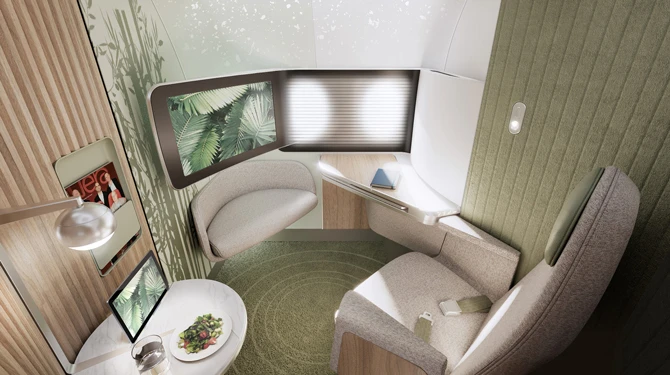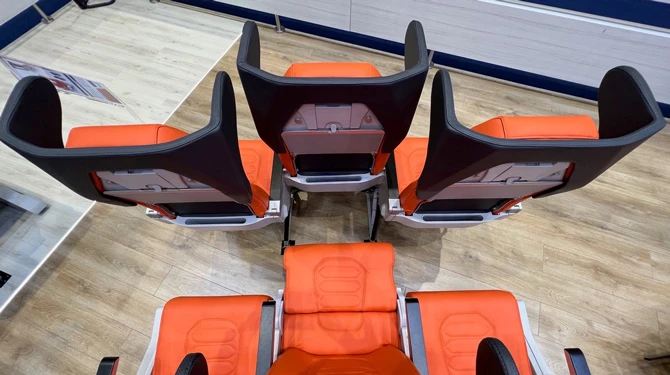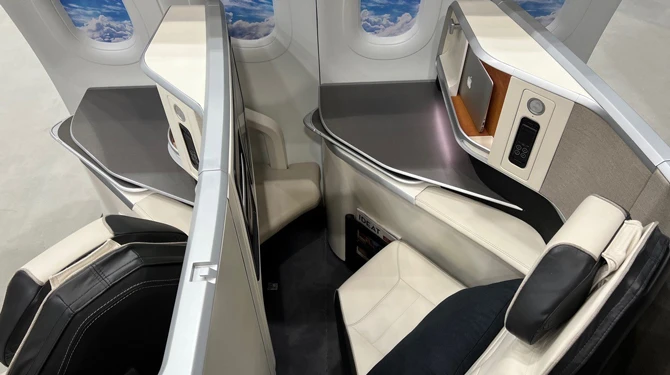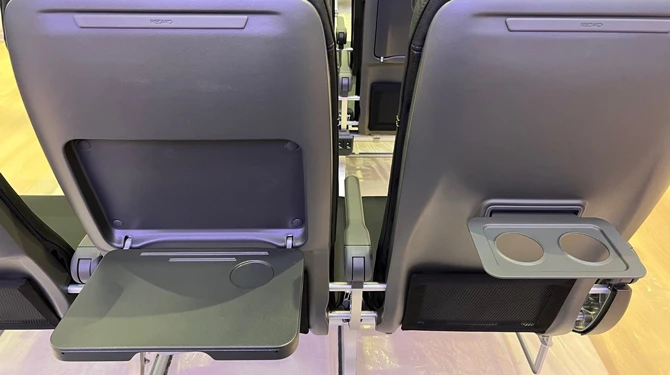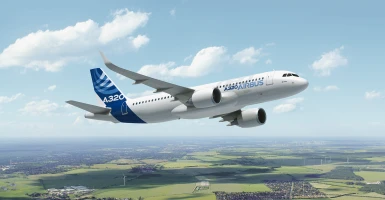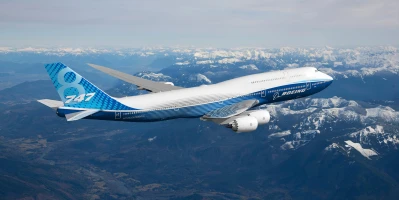good-to-know
The latest trends in aircraft cabins
Creating an aircraft cabin is like a tricky jigsaw puzzle for designers and manufacturers. What goes in must be lightweight, efficient, occasionally luxurious and always sustainable.
author: Andreas Spaeth | 4 mins reading time published on: 07.11.2022
author:
Andreas Spaeth
has been traveling the world as a freelance aviation journalist for over 25 years, visiting and writing about airlines and airports. He is frequently invited to appear on radio and TV programs to discuss current events in the sector.
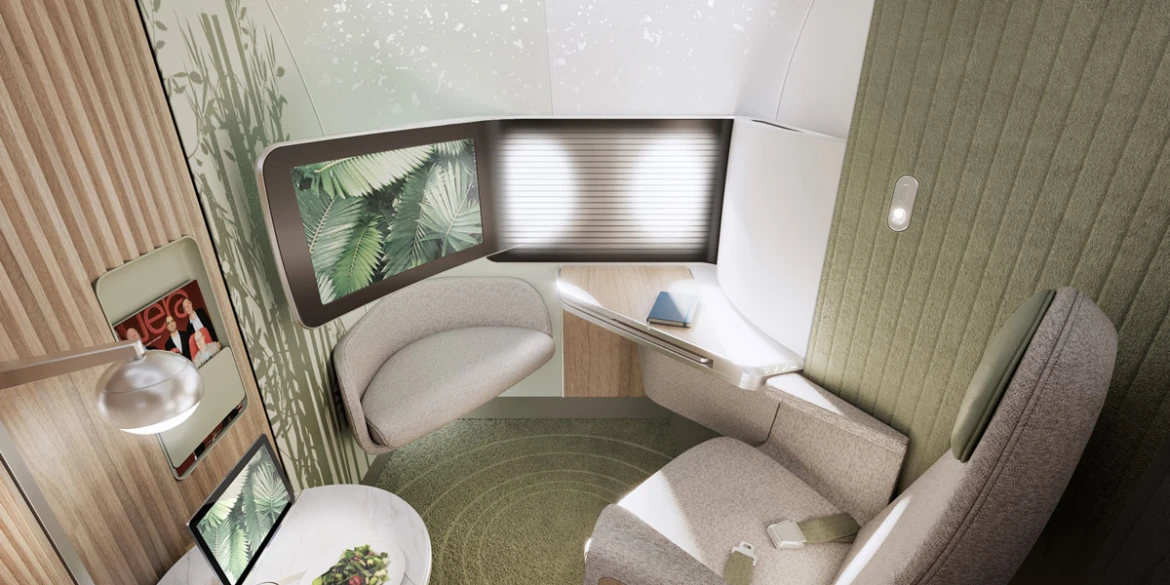
©Crystal Cabin Award
Designing an aircraft cabin is one of the most complex creative processes there is. The cabin floor of a passenger aircraft must rank among the most expensive pieces of real estate in the world—each square meter is precious. This is because the space available can’t simply be expanded as desired, and airlines must find a design for their cabins that meets the needs of their customers while also being affordable to operators. As if this task weren’t already hard enough, it now comes with an additional caveat: not only the aircraft itself but also the fixtures that go into it must be sustainable. For designers, ticking all these boxes is like completing an incredibly difficult jigsaw puzzle—one that imposes a lot of constraints and only rarely allows them to realize their bold ideas. Once a year, the cabin sector converges on Hamburg for the Aircraft Interiors Expo (AIX) trade fair.
One regular visitor to AIX is Italian engineer Gaetano Perugini of the manufacturer Aviointeriors. He often enjoys great success with exceptional solutions: at his company’s booth at this year’s fair in June, he once again presented several jaw-droppers, including the Triangle model. In each three-seat row for economy class, the middle seat is positioned half a seat further forward than its neighbors. “This is an ideal distance that also provides each passenger with ample elbow room,” says Perugini, demonstrating the seats together with visitors to the fair. The protruding part of the middle seat can be folded up to allow people to pass, and occupants are also partitioned off from each other by headrests that point forward at ear level.
However, Perugini isn’t very optimistic that the airlines will be snapping up the Triangle—ultimately, they tend to struggle with all cabin innovations. “All these ideas must first be properly discussed,” agrees Anthony Woodman, who is responsible for customer experience at Virgin Atlantic Airways. But there’s nevertheless a desperate need for improvements precisely where the vast majority of customers spend their time, as Matt Round, Chief Creative Officer at London design agency tangerine, points out: “In economy class, the passenger experience is borderline throughout the sector.”
In focus: Less weight
What really counts in economy class cabins is lightweight construction, because less weight on board means lower fuel consumption and emissions. “This is also the biggest trend right now—our lightest economy seat for medium-haul routes weighs 8.5 kilograms. That’s 25 percent less than the previous generation,” says Mark Hiller, CEO of German seat manufacturer Recaro, the global market leader in the economy segment. The lightest seat for long-haul routes currently weighs in at 12.0 kilograms, down from 13.5 kilograms, a reduction that is in part due to new materials like titanium and carbon-fiber composites as well as new magnesium alloys. Another great way to save several kilograms is to install the new, thin, flexible OLED screens.
“It’s equally important to recycle individual materials or even entire seats, but that’s difficult when carbon fiber is involved,” Hiller says. This is why the industry is currently on the lookout for fresh ideas for manufacturing seat covers in a more eco-friendly way. “There are new, sustainable materials, such as vegan cactus leather or mycelium leather, which are made from sustainable raw materials and, like cacti, don’t consume any water,” says Matthew Nicholls of Tapis, a provider of fabrics for aircraft interiors. “The question is: Can production of these materials be ramped up enough to meet the demand that comes with widespread commercial use?”
More comfort for the new long-haul jets
In business class, however, the latest trend goes against the quest for lightweight fixtures: “Sliding doors that provide privacy in the compartments are now standard for high-end products,” says Vincent Mascré, CEO of Safran Seats. “Passengers expect this, but it does sadly add both complexity and weight.” Overall, fitting a sliding door adds eight to ten kilograms per seat. The long-haul market has recently begun to welcome narrowbody aircraft, most notably the Airbus A321XLR, which also celebrated its first flight at AIX in Hamburg in June.
This jet class, formerly dominated by medium-haul aircraft, is now also seeing its first luxurious premium products. The race is on among cabin manufacturers to adapt their premium cubicles—originally conceived for widebodies—to smaller jets. This is proving amazingly successful, including the addition of sliding doors. Following the example of U.S. airline JetBlue, which serves transatlantic routes with an A321LR, many airlines will equip the first row of narrowbody cabins with two suites that offer more space than some of the suites in widebody jets in service today. The seat sector must therefore be flexible, which is one of its strengths—in his office in Naples, Perugini is probably already working on new solutions.



